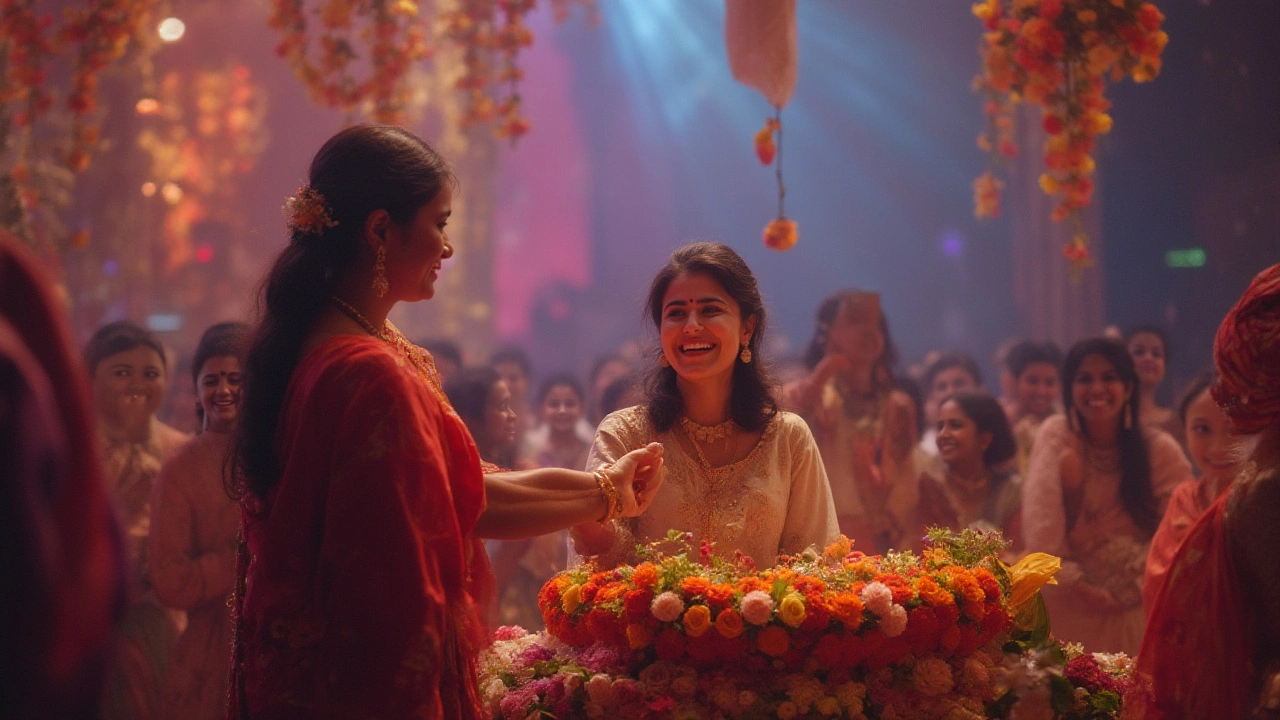
- Created by: Lydia Carmichael
- Completed on: 10 Jul 2025
- Categories: Events
Picture this: chandeliers sparkling, people dressed to the nines, laughter echoing through a grand hall, and thousands raised for a cause that actually makes a real-world difference in Wellington. Now, think about what goes on behind the scenes to get to that magical moment—it’s not just about handing out invites and hoping for the best. Most charity balls that make headlines and bring in the money have months of sweat, strategic plotting, and tiny details that can get overlooked in that dreamy vision. But the most surprising detail? Even in 2024, around 45% of first-time charity organisers admitted the amount of coordination blew their minds, according to the New Zealand Fundraising Institute. Still, events like these are worth every bit of the effort. They don’t just raise money—they pull a whole community together. Ball down in Wellington? It’s the chat of the town, drawing in support that lasts long after the lights dim.
Planning your Charity Ball: Picking Purpose, Building Your Team, and Mapping the Journey
Every charity ball that leaves a mark starts with one simple question: why does this event matter? Whether you’re passionate about environmental recovery after Wellington’s last rough winter, funding music programs for kids, or supporting local food banks, your cause will set the tone for the night. Pin that purpose down, because you’ll keep coming back to it in every big decision: location, date, dress code, sponsors—the whole shebang.
Once that’s clear, forget the lone wolf act. You need a planning team with heart and practical brains. Start with your core group—usually three or four dependable go-getters that handle everything from wrangling volunteers, to tackling stress head-on. Pick people with skills first, then assign roles. For instance, find the mate who loves spreadsheets to manage the budget (because balls chew up money faster than you’d expect), the one who networks like a Kiwi at a barbecue for sponsorships, and someone who sweats the small stuff for logistics.
Timelines are your best friend. Most successful events give themselves six to twelve months, especially if you want the best venues in Wellington or the hottest auctioneer who gets crowds throwing their hands up. Create a detailed project timeline. Think about when to send out your first sponsor pitch, when to confirm the band or DJ, deadlines to print tickets, and a “go/no-go” date for each critical piece. Don’t just hope people remember—put it in a shared calendar and check in weekly. You'll thank yourself later.
| Task | Ideal Timeline |
|---|---|
| Secure Venue | 8-12 months before |
| Lock in Entertainment | 8 months before |
| Send Initial Sponsor Requests | 9 months before |
| Design and Print Tickets/Invites | 6 months before |
| Start Social Media Promotion | 5 months before |
| Confirm Volunteers | 3 months before |
| Finalize Auction/Raffle Items | 2 months before |
| Set Menu | 1 month before |
| Confirm Logistics (AV/Security) | 2 weeks before |
Remember, no charity ball survives without a budget. Don’t ballpark—list every potential expense, from the linen hire to the cost of credit card payment processing. Be ready to compare deals and ask for charity rates. You’ll be surprised how many Wellington venues, caterers, and even florists do this if you ask early enough.
And don’t forget: the goal isn’t just a good night, it’s to raise money. Figure out your fundraising plan early. That might mean charging for tickets, holding silent or live auctions, setting up pledge walls, running a raffle, or getting creative with “pay what you wish” elements. Add donation options everywhere you can—on the night, ahead of the event, and for no-shows who still want to help.

Venue, Theme, and Making It Unforgettable: Setting the Scene for Giving (and Fun)
The right venue pulls your guests from ‘why am I here?’ to ‘I’d better dress up for this’. In Wellington, you’ve got choices—old town halls, waterfront pavilions, boutique hotels. Pick a location that fits your budget but still wows. Don’t forget the basics, either: easy parking or bus access, good acoustics, space for all your activities (dancing, auctions, mingling), and a layout that won’t leave folks awkwardly squashed or scattered. Visit in person, and ask other organisers if the staff were good with last-minute chaos.
Now, for the fun bit: picking a theme. Think about what grabs attention while tying back to your cause. If you're raising money for environmental action, try a sustainable glam theme with table centerpieces from upcycled native flowers. Funding education? How about a “Back to School Ball”, swapping chintzy decor for old-school blackboards with quotes from local students? Themed galas raise, on average, 19% more than generic balls—people actually love to lean in and be part of the fun. If you want data, check out the 2023 New Zealand Charity Events Survey.
Your decor doesn’t need to drain the budget—tap local artists, ask sponsors for in-kind support, or hunt on local Facebook groups and op-shops. Lighting is your secret weapon, by the way; fairy lights, upcycled chandeliers, or even well-placed LED spots immediately lift the feel.
Catering is where memories are made (and guests will absolutely notice if you skimp). Check dietary requirements early—lots of folks are gluten-free, vegan, or have allergies—and add at least one show-stopper meal for the Instagram crowd. Want people raving? Hire a local chef for a short demo, or tie in a tasting from a beloved Wellington food truck. If your budget’s tight, don’t shy from creative buffet setups or grazing tables, which can look stunning and fill bellies.
Let’s talk about entertainment. Live music? Always a win, especially if it’s a local band or DJ who knows how to lift the mood. Some balls mix it up with a comedy act, fire-dancer, or even a magician—anything memorable gets people talking and sharing on social. Just match the tone of the night to your crowd. A formal black-tie affair might call for a string quartet, while a garden gala benefits from a jazz ensemble or acoustic singer-songwriter.
If you’re adding an auction or raffle (and you should), get started months ahead. People love bidding wars but only if the prizes are worth it; canvas local businesses, travel agencies, and Wellington experiences for standout offerings. Experiences—like private dinners, behind-the-scenes tours, or even dog-walking with a minor celebrity—usually bring in bigger bids than objects. Don’t forget to shout out sponsors on the night and in all promo materials, it sweetens the deal for them and can land you extra support next time around.
Ticketing should be pain-free. Use online platforms that handle RSVPs, payments, dietary info, and reminders. Earlybird tickets or group discounts give a good boost, and always keep a handful of seats for last-minute community legends who do a lot for your cause.

Marketing, Sponsorship, and Night-of Magic: Spreading the Word and Running the Show
Even the best-planned charity ball will flop if nobody knows or cares. Start with a solid marketing plan covering social media, community groups, old-school posters, and even local radio. Don’t just blast ‘Buy a ticket’—show off sneak peeks of the venue, teaser shots of auction prizes, or tell quick stories about how past events changed lives. Engage your guests early by running polls (“What dress code should we set?”) or encourage potential guests to nominate their favourite songs for the band.
Reach out to the media. Write a simple, heartfelt press release—the New Zealand Herald or local Wellington blogs welcome stories about good causes. And don’t forget your network: most tickets are actually sold through direct invites or friendly nudges from people who care about the charity. When you harness personal connections, you sell tickets faster.
Sponsorship props up most big-ticket events. Get creative: you might have a headline sponsor for their logo everywhere, or a wine sponsor for drinks, or even small business sponsors for each table. Always offer value: a mention in the program, table signage, speaking opportunities during the event, or the chance for a rep to hand out door prizes. Be ready with a sponsor pack that shows how many will attend and what kind of positive press they’ll get.
Rally your volunteers now—they’re the engine room on the night. Make sure everyone knows their job (greeting at the door, running the raffle, taking photos, helping guests with dietary needs), and give them a tiny thank-you. Well-trained volunteers are your best insurance against things tipping into chaos if the sound system fails or it suddenly pours outside.
On the night, your job is to make guests feel special, not just like ticket-holders. This starts at the entrance, where a warm welcome, maybe with a photo backdrop, sets a high-energy mood. Have someone on mic duty who can hype the auction, keep presentations snappy, and keep momentum bubbling along. Make short, emotional appeals for the cause, and use slow moments (like during dessert) for quick reminders about how to donate or bid.
Tech is your friend. Use a card reader for donations (most Kiwis don’t carry cash), display live fundraising tallies if possible, and offer QR codes linking guests straight to your donation page. A fun tip: encourage selfies or mini-videos for social—for every public share with your event hashtag, have a sponsor donate a small amount to your cause. It’s a double win for awareness and extra dollars.
Collect feedback fast. Drop a thank-you with a survey link to everyone who came, donated, or worked behind the scenes. Take notes on what guests loved, what could be slicker, and your best wow-moments. These will be pure gold when bidding for sponsors or planning next year’s event.
One more thing: the most memorable charity balls always bring people together in ways that last. Sure, money is vital, but so is community spirit—the night should leave guests grinning, sharing memories, and already asking when they can book tickets for next year. That buzz is how you know you pulled it off.